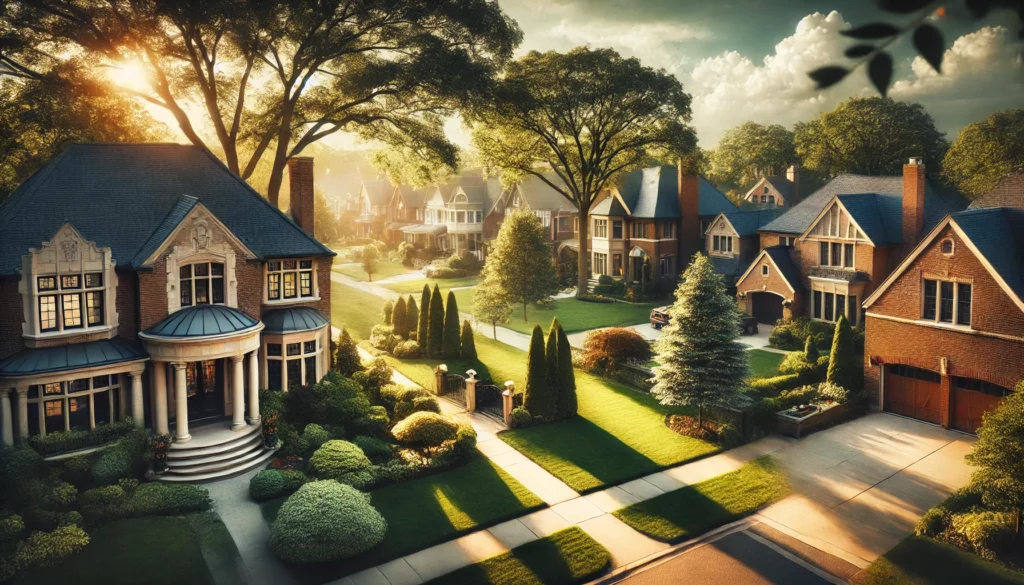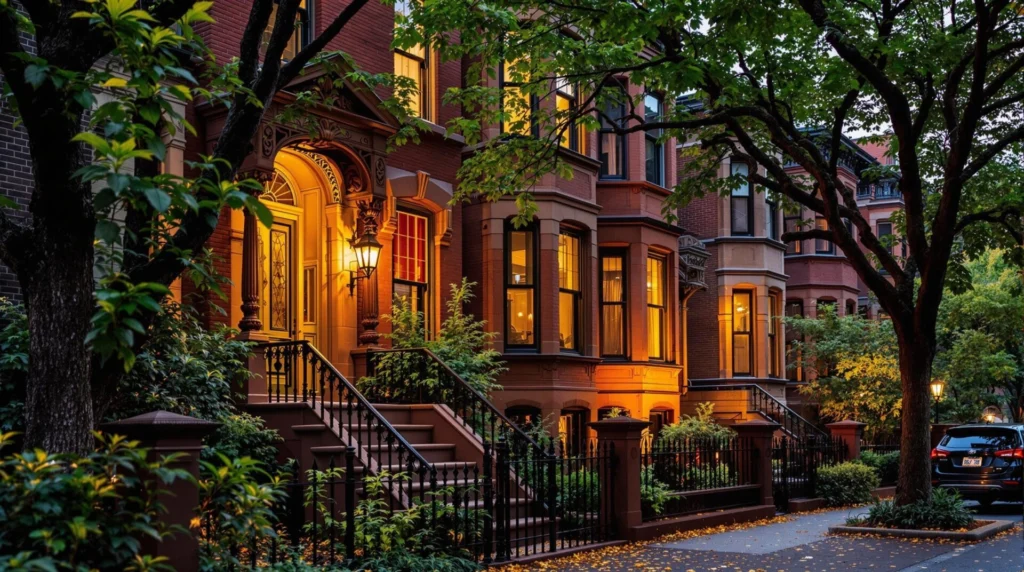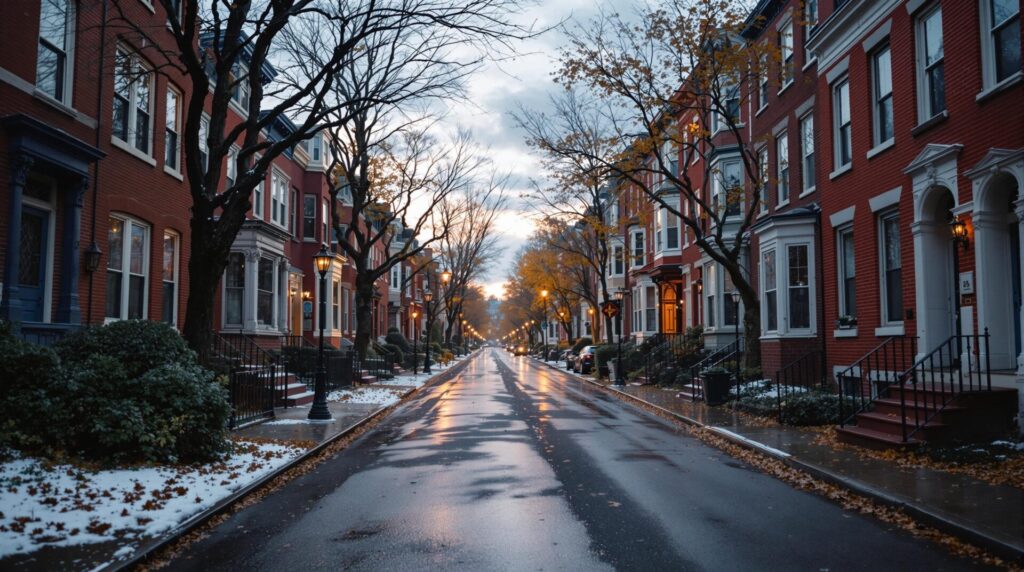Key Takeaways
- Detroit’s median home sale price has increased by 324% since 2009, making it an emerging hotspot for investors.
- Major companies like Rocket Mortgage and Ford are driving Detroit’s revitalization with billions in investments.
- Former NBA star John Salley regrets selling his Detroit mansion, now valued at nearly $9 million.

From Bankruptcy to Booming: How Detroit’s Real Estate Revival Has Created Selling Regret
Detroit, a city once synonymous with urban decay and financial ruin, is experiencing an unexpected renaissance in the real estate market.
A dramatic rise in property values and increasing investor interest have transformed Detroit into an unlikely hotspot for real estate enthusiasts.
Among those riding this wave is former NBA star John Salley, who reflects on one of his biggest regrets—selling his 32,000-square-foot mansion years before its incredible appreciation.
From Urban Decline to Real Estate Boom
After filing the largest municipal bankruptcy in U.S. history in 2013, with $20 billion in debt, Detroit’s comeback is now being heralded as nothing short of miraculous.
In 2009, the median home sale price in Detroit had plummeted to a mere $58,900. However, by May 2024, that figure had skyrocketed to $250,000—an astounding 324% increase in just 15 years, according to Realtor.com.
Investors across the country, like Chase Hunter, a Houston native, are snapping up properties at bargain prices, lured by Detroit’s low entry costs and high potential returns.
“I closed on my first two properties the same day in June 2021,” Hunter said in an interview. “One was $2,000, and the other $1,800. It was my first time ever setting foot in Detroit.”
Hunter’s journey mirrors the city’s larger transformation, where investors are seeking to capitalize on low-cost housing.
These investments often come with significant renovation costs. Hunter’s $2,000 property required an additional $85,000 in repairs before it was rentable—a challenge common for many Detroit buyers.
Challenges Remain Amid Crime Concerns and Renovation Costs
Despite the rising property values, Detroit’s real estate market is far from a sure bet.
The city’s crime rate, though it has fallen to a 57-year low, still serves as a deterrent for some investors.
“Crime is definitely still a major challenge,” Hunter noted, “but the city is improving, and I see that reflected in the increasing investor interest.”
These challenges haven’t stopped major corporations from investing heavily in the city.
Dan Gilbert, the billionaire behind Rocket Mortgage, has invested billions into Detroit, acquiring over 130 properties.
Other big names, such as Ford and General Motors, are also pouring millions into revitalizing iconic areas like the Michigan Central Station and reshaping Detroit’s skyline.
Luxury retailers, including Gucci, have even opened stores downtown, showcasing Detroit’s growing appeal.
John Salley’s Regret: Selling His Detroit Mansion Too Soon
While newcomers and corporate giants flock to Detroit, one notable former resident, NBA legend John Salley, is now lamenting his decision to sell his 62-room mansion in the city’s prestigious Palmer Woods neighborhood.
Purchased from the Catholic Church in the 1990s for around $500,000, the home was sold for approximately $900,000 in 1995—a price that, at the time, seemed fair.
However, today, the mansion, known as the Bishop Mansion, is listed for nearly $9 million. Salley, who hosted star-studded parties in the sprawling estate with 12 bedrooms and 11 bathrooms, reflects on the missed opportunity.
RELATED CONTENT
“Selling that house was one of my biggest real estate mistakes,” Salley said.
The property, built in the 1920s, has historical significance, having been commissioned by the Fisher Brothers for Bishop Michael Gallagher of the Roman Catholic Archdiocese of Detroit.
Detroit’s Rich Architectural History on Display
Salley’s former mansion is not the only architectural gem drawing attention in Detroit. The city’s ongoing real estate boom has fueled a renewed interest in its historic homes.
Upcoming home tours in Detroit’s University District and other neighborhoods will showcase these properties, giving attendees a glimpse into the past.
From Tudor Revival homes to 1920s estates with stained-glass windows and ornate plasterwork, these tours highlight the city’s architectural richness.
For example, the University District Home Tour will feature six homes, including a 4,500-square-foot property bought three years ago by Dr. Drena Belland and Darren Howell.
Despite its move-in ready appearance, the home required extensive upgrades, from plumbing to electrical systems and even replacing 27 windows.
Today, it stands as a testament to Detroit’s resurgence, with original features like leaded glass windows and wood-burning fireplaces seamlessly blended with modern touches.
Related Facts
From Mansions to $1 Homes: Detroit’s Jaw-Dropping Real Estate Rollercoaster
In the 1920s, Detroit was a booming industrial powerhouse, largely driven by the success of the U.S. auto industry, which gave rise to a remarkable real estate boom.
Affluent neighborhoods like Palmer Woods and Indian Village became home to opulent mansions, built for auto executives and notable figures like Catholic bishops. These homes boasted luxury features such as custom Pewabic tiles, limestone facades, and intricate stained-glass windows, symbolizing Detroit’s economic dominance.
At its peak, the city had one of the highest homeownership rates in the country, with a population nearing two million people.
However, by 2013, Detroit’s fortunes had reversed dramatically.
The city declared the largest municipal bankruptcy in U.S. history, overwhelmed by $20 billion in debt.
Neighborhoods that once symbolized affluence saw properties languish and decay.
In some cases, homes were auctioned for as little as $1, with entire blocks facing abandonment. Investors avoided the city, and Detroit became infamous for urban blight.
Fast forward to today, and Detroit’s real estate is undergoing a resurgence.
Properties that once sold for pennies are now experiencing skyrocketing value, creating massive profits for risk-taking investors.
Homes that could be bought for a few thousand dollars are now worth hundreds of thousands, reflecting Detroit’s improbable comeback.
Assessment
Detroit’s real estate market is undergoing a seismic shift, attracting investors and big corporations alike. As the city revitalizes, innovative housing developments and commercial spaces are emerging, appealing to a younger demographic seeking urban living. Notably, the impact of DINKs on real estate is becoming increasingly significant, as dual-income, no-kids professionals drive demand for modern amenities and upscale apartments in the heart of the city. This trend is reshaping the landscape, prompting developers to cater specifically to the needs and preferences of this growing segment of the population.
The city’s transformation, once deemed improbable, is now a beacon of opportunity.
However, challenges like crime and high renovation costs remain part of the equation.
As Detroit continues to evolve, both the success stories and regrets, like John Salley’s mansion sale, underscore the complexity and potential of this revitalized market.
Investors, both seasoned and new, are flocking to the city, drawn by the allure of low entry costs and the promise of significant returns in a market that is truly “like no other.”
No related posts.





















